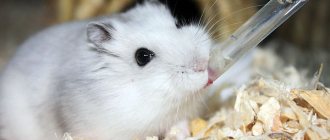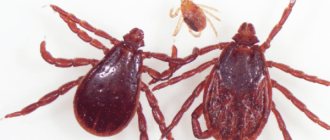Planet Earth is home to a huge number of hamsters and hamsters. They can be found on all continents, with the exception of Antarctica and Australia.
The largest number of varieties of these animals is found in America and on the islands off its coast (subfamily Sigmondontinae) (more information about the types of hamsters here). African hamsters belong to the subfamily Lophiomyinae, and those living in Eurasia belong to the subfamily Cricetinae, family Cricetidae.
The Central Asian (Syrian) hamster is well known as a pet. In the wild, it lives only in a small area in northwestern Syria.
The animals inhabit various biotypes: forests, forest-steppes, steppes, semi-deserts, deserts, savannas, mountains, shores of reservoirs. Many species settle in close proximity to humans.
On the territory of Russia, mainly in the steppe zone, 12 species of these animals are found.
Rat-like hamsters are common in China. Also found in Russia (Amur Region and Primorsky Territory).
Hamster: general characteristics
These animals belong to the hamster family, and are part of the rodent subfamily. At the moment, there are 19 species of furry animals, which are divided into 7 genera:
- Medium (includes 4 types);
- Hairfoots (includes 3 species);
- Ordinary;
- Gray (includes 7 types);
- Eversmanova (includes 2 types);
- Kansky;
- Rat-like.
Hamsters have a dense, squat body, with short legs and thick, short fur. Depending on the type they belong to, the size of the animals varies from 6 to 35 cm. In nature, the color of rodents is usually gray, sandy yellow or brown; decorative hamsters have a more diverse color palette, ranging from white to charcoal black.
In nature, hamsters have an inexpressive color to be invisible to predators.
A distinctive feature of animals lies, of course, in their cheek pouches - elastic folds of skin that can stretch to the size the animal needs. Sometimes hamsters carry food in their cheeks, the mass of which is equal to the body mass of the rodent.
The furry animals are nocturnal. During the day they rest in their burrows, and at nightfall they go out in search of food. Despite being crepuscular animals, hamsters have poor eyesight and must rely on their excellent hearing and well-developed sense of smell. In winter, hamsters hibernate, but wake up from time to time to feed on accumulated reserves.
The average lifespan of wild hamsters is 2-4 years, while their domestic relatives can live up to 5 years.
Elena
Ask a Question
Question to the expert
Please tell me, can hamsters swim?
Yes, hamsters are excellent swimmers, although they do not really like water. But if necessary, this animal is able to swim across a shallow river using its cheek pouches, which it fills with air, thanks to which they serve as a kind of inflatable ring.
How to distinguish a hamster from a decorative mouse
Many people wonder how to distinguish a representative of the hamster family from mice. It's pretty simple. It is enough to pay attention to such characteristics as:
- size – hamsters are usually larger than decorative mice;
- the presence of a cheek pouch in hamster breeds, its absence in mouse breeds;
- the presence of a thin, long tail in mice;
- fur color - in hamsters it can be multi-colored, black, white, gray, but in mice it can only be white or gray.
Comparing which pet is more active is pointless for the reason that everything depends on their habitat. Basically, both of these animals love various accessories designed to train strength and endurance, so they must be present in the cage.
Lifestyle of a hamster in the wild
Looking at a miniature domestic hamster, it is difficult to believe that such a fragile animal can survive in captivity. But wild hamsters are strikingly different from cute decorative pets. In their natural environment, these are quite aggressive creatures that are hostile not only to other animals, but also to their fellow tribesmen.
In the wild, hamsters are vicious and aggressive
The European forest hamster, which is popularly called "karbysh", prefers not to waste time digging a hole, but takes away ready-made homes from other rodents, such as gophers or jerboas.
Lifestyle of hamsters
Fluffy rodents are solitary by nature, and do not want to share their home or the food supplies collected with hard work with anyone. A hamster's domain can extend over 8-10 hectares, and he will bravely defend his burrow and the surrounding area from the encroachments of any uninvited guests. Interestingly, male hamsters do not tolerate the presence of other males in their area, but they allow females to establish burrows there, with whom they mate during the mating season.
Battle of two males for territory
Hamster hole
Recommended by topic
Horse Rabbit Cow
The hamster's home deserves special attention. Actually, calling an animal’s home a hole would be a huge understatement. After all, these are real underground mansions, with an intricacy of passages, living rooms and a food compartment, going 2.5-5 meters deep into the earth. Clean rodents even set up a separate section as a toilet, and in the opposite direction from the utility pantry. And the females also have an additional room for giving birth and raising their young.
Sometimes hamsters build themselves several barns, each of which stores supplies for the winter. Also, furry animals dig small burrows on their territory, which serve as temporary shelter from predators.
Procurement of food supplies
With the onset of summer, the hamster begins to prepare for the long, cold winter by diligently filling the pantry with grain, seeds and vegetable tubers. The animal carries small provisions in its cheek pouches, and it has to carry root vegetables in its teeth, holding them with its front paw.
The rodent methodically puts all the food it finds by type, so vegetables, grains and seeds are stored in different corners. At one time, scientists who examined the barns of these animals were sure that the hamster even sorted types of cereals. But then zoologists, who studied this phenomenon in detail, found that the animal simply stocked up on wheat, barley and corn at different times, so it stacked each grain in a separate pile.
One hamster's pantry can store up to 90 kg of food supplies. In lean years, Chinese peasants even specifically search for their holes, ruining the grain reserves that the furry rodent has diligently collected for several months.
What do hamsters eat?
The diet of hamsters consists mainly of plant foods, although in the wild these animals are omnivores, and in order to survive, they do not hesitate to eat even carrion. True, this rarely happens, because in their natural habitats there is enough grain and grass, which is more than enough for feeding and for generous winter reserves.
Hamster eats grain
Among cereal crops, furry rodents prefer wheat, buckwheat, corn and barley. They also enjoy eating legumes, especially peas. In the spring, hamsters eat young shoots of trees and shrubs, and in the summer their menu is replenished with fresh greens: plantain, dandelion, clover. Moreover, the animals eat both herbs and their roots and seeds.
Hamsters will not refuse vegetables and fruits, and this is precisely why farmers do not like them so much. After all, enterprising animals, under the cover of darkness, devastate farmland, significantly reducing the harvest of potatoes, carrots and beets. As for fruits, there is no particular damage from the animals; they do not know how to climb trees, and only pick up fallen apples and pears. Also, rodents do not miss the opportunity to eat ripe raspberries, strawberries and blackberries.
Hamsters raided neighbor's farm
Furry animals diversify their menu with protein foods. Hamsters eat beetles, grasshoppers, caterpillars, and they do not disdain insect larvae. And for rodents that live in the lower reaches of rivers and near swamps, additional food is provided by mollusks, small crustaceans and fish left over from the meals of other animals.
It may seem incredible, but wild hamsters sometimes attack small field mice, and even chickens if there is no chicken near the chicks.
Classification
This small subfamily includes 19 species belonging to 6 (7) genera [1]:
- Subfamily Cricetinae
Genus Medium-sized hamsters (
Mesocricetus
) The Syrian hamster (
Mesocricetus auratus
) is popular as a pet, - Brandt's hamster ( Mesocricetus brandti
), - Radde's hamster ( Mesocricetus raddei
), - Newton's hamster ( Mesocricetus newtoni
),
)
- Djungarian hamster ( Phodopus sungorus
),
),
),
- Common hamster ( Cricetus cricetus
),
)
- Short-tailed hamster ( Cricetulus alticola
),
),
),
),
),
)
)
- Mongolian hamster ( Allocricetulus curtatus
),
)
- Cana hamster ( Cansumys canus
)
- Rat-like hamster ( Tscherskia triton
)
Reproduction and raising of offspring
Hamsters become sexually mature very early. Actually, both females and males are ready for procreation, reaching two months of age. The breeding season for these animals lasts from April to October. During the winter months, hamsters become inactive and practically do not crawl out of their burrows, eating accumulated reserves. But zoologists sometimes record cases of cubs being born in December, and this usually happens during an abnormally warm and snowless winter.
Unlike their wild counterparts, domestic hamsters breed all year round, since when kept in an apartment, their home always has a comfortable temperature and enough food.
Features of the mating season
As already mentioned, in their natural environment, hamsters lead a solitary lifestyle. They do not form strong mating unions, although some males have a kind of personal “harem” consisting of 3-5 females. True, he lives in different burrows, but the females live in the controlled territory of their “husband,” and he jealously protects them from the encroachments of foreign males.
The female and male meet only to mate
Hamsters do not have mating games, there is only a short period of courtship. To put the female in a romantic mood, the male marks the territory near her burrow with an odorous substance and brings gifts to the capricious lady in the form of grains, tree branches and tasty larvae.
As soon as the female responds favorably to the courtship, the couple in love retires to the hole for the whole day to mate. After mating games, the male leaves and does not take any part in raising the offspring.
Pregnancy and caring for babies
Recommended by topic
Bats Cow Arctic Fox
A female hamster carries babies for 16-18 days, so she is able to bear offspring 2-3 times a year. Depending on the type of rodent, there are from 3 to 18 cubs in one litter.
Babies are born bald and blind, but newborn hamsters already have tiny incisors. Small hamsters can eat plant foods already in the second week of life, but for another month their main diet is mother's milk.
The cubs develop very quickly; in the second week they open their eyes, become covered with soft fur and look like a miniature copy of their parents. The female takes care of the babies until they grow up, takes them for walks, and teaches them to recognize the sounds made by predators. And if a furry mother notices a fox or ferret near her hole, she hurries to move the offspring to another, safer home.
Female hamsters are very caring and attentive mothers.
Sometimes females adopt other people's cubs and raise them along with their own offspring. But there are cases when females eat their babies. This happens when there is a shortage of food in a dry year, and also if there are too many babies in the litter, and the female understands that she cannot feed them all.
Rodent health
Most species are in good health. Older individuals whose body resources are almost exhausted are more likely to get sick.
Lifespan
In nature, rodents rarely live beyond 1 year. This is due to the activity of natural enemies. At home, the life expectancy of most species reaches 3 years.
In nature, rodents reach 1 year of age.
Frequent illnesses
Most often, an animal's health deteriorates due to injury. Damage often occurs due to falls, strong squeezing, and fights with relatives. In addition, metabolic disorders are often diagnosed in older rodents. Your hamster may develop diabetes. Some illnesses are caused by fear and stress. Such pathologies include heart attacks and strokes. These disturbances often lead to the death of old individuals.
It is relatively rare for hamsters to have problems with stool caused by poor diet or intestinal infections. When staying in a draft and getting the fur wet, there is a high probability of developing a runny nose and pneumonia. With a strong decrease in immunity in an adult, the eyes may turn sour. Without treatment, there is a high likelihood of an abscess forming. Some species are predisposed to dermatitis. With age, the risk of developing malignancy increases.
Natural enemies of hamsters
In their natural environment, the life of these miniature rodents is full of dangers, because they are literally surrounded on all sides by predators. Moreover, the threat comes from both the ground and the air, so furry animals always have to be on alert.
The hamster is always on alert, recording any suspicious rustles and sounds
They are hunted by large animals such as wolves, lynxes and wild dogs. Cunning foxes and weasels often ambush near a hamster's burrow, patiently waiting for the prey to leave its shelter. Stoats, badgers and ferrets are also not averse to feasting on these animals, and they rarely manage to escape from clever predators.
Among the dense vegetation and fallen leaves, insidious snakes lie in wait for hamsters. Rodents are also defenseless against feathered predators. As soon as the animal relaxes its vigilance, it immediately becomes a victim of a hawk, owl or kite, which quickly attacks the unwary prey.
At the sight of an enemy, the hamster tries to escape, or freezes in one position, hoping that he will not be noticed. But, if all escape routes are blocked, the small rodent takes a threatening stance and rushes at the enemy. Although, given the size of the hamster, it is not difficult to predict the outcome of the battle between the brave baby and the hungry predator.
Interesting Facts
The word “hamster” comes from ancient Russian. homeboys
, old glory
homestore. Slavic languages probably borrowed it from Old Iranian; a related word is the Avestan hamaēstar
, “an enemy who throws to the ground” (meaning that the hamster bends the stems of cereals to the ground to get the seeds) [2].
D.-V.-n hamustro
(from where modern English
hamster
and German
Hamster
) was probably borrowed from Old Church Slavonic [2] [3].
The Vietnamese authorities have banned the keeping of hamsters, rightly considering them carriers of dangerous diseases - the reason for such measures was the massive import of animals that had not passed veterinary control from abroad, which was associated with the onset of the Year of the Rat according to the eastern calendar and an increase in demand for small rodents. The maximum fine for violating the ban is 30 million dong (which is about 57,000 rubles) and is comparable to the annual income of a resident of this country. [4]
Rebif, a drug for the pathogenetic treatment of multiple sclerosis, is also produced from a culture of Chinese hamster ovary cells; Alemtuzumap is also made from it, which is used to treat chronic lymphocytic leukemia, and in 2011 it is planned to be approved for use in the Russian Federation for the treatment of multiple sclerosis, since this drug has shown excellent test result.
Rules for keeping at home
Hamsters have become common pets due to their miniature size and ease of care. But even such an undemanding animal needs to create certain conditions of detention and provide it with proper nutrition. This means that it is strictly forbidden to keep a hamster in a round aquarium left over from a goldfish and feed it fast food.
To live comfortably in captivity, a furry rodent will need:
- Comfortable, spacious cage. Housing for a pet is selected taking into account its size, as well as the fact whether you want to have one or several hamsters. Naturally, for pair or collective keeping you will need a larger cage.
- Feeder and drinker. It is advisable to purchase 2 feeders, one for the grain mixture, and the second for vegetables and fruits.
- Cozy house. A small animal simply needs a shelter that resembles a dark mink, in which it can hide and take a break from annoying attention.
- Running wheel and walking ball. Allowing your furry pet to roam freely around the house is not a good idea. And such devices and balls will allow the hamster to satisfy its need for physical activity without causing damage to the apartment.
- Balanced diet. You need to feed the animal with special grain mixtures, which are sold in any pet store. You can feed your pet fresh vegetables, fruits and berries. And in the summer, pamper it with lush garden greens and herbs.
- Additional accessories. The list of these includes ladders, hammocks, labyrinths and tunnels. By the way, most of them can be made with your own hands.
It's time for training.
The hamster's cage is cleaned every 4-5 days. If this is done less often, an unpleasant odor will emanate from his home, and also, the wet filler will become an excellent environment for the development of pathogenic bacteria.
Character and behavior of domestic hamsters
Ornamental hamsters are descendants of generations raised in captivity, so they are not characterized by the aggression of their wild relatives. These are peace-loving and friendly animals that are willing to be handled and enjoy communicating and playing with humans.
It's cozy and warm in the hands of the owner
Of course, a pet hamster can also bite, but this happens if the rodent is scared or the owner accidentally hurt it. And if you behave correctly with your pet, the hamster will become affectionate and trusting, will take food from your hands, and even fall asleep in the palm of its owner.
Another difference between domestic hamsters is that they get along quite well with their fellow hamsters in a water cage. It is best to keep two females together; females are more good-natured and calm. Two males can also get along, but from time to time there will be fierce fights over territory and tidbits.
Hamsters share a sweet slice of tangerine between two
Well, if you want to start breeding furry rodents, then buy a pair of different sexes, or one male and two or three females. But keep in mind that in captivity hamsters breed all year round, so think in advance where you will place their numerous offspring.
Question to the expert
Please tell me why the hamster sleeps all the time?
If the hamster sleeps all day, this is normal; he is gaining strength for being awake at night. But when a pet sleeps at night and hardly shows up from its house, perhaps it lacks vitamins and beneficial microelements or is sick. Change the brand of food, and if necessary, show the animal to the veterinarian.
Features of determining the sex of babies
Until babies are at least a month old, it is undesirable to recognize their gender. And it’s better not to touch the crumbs at all!
The most common mistake when trying to determine the sex of a hamster is the desire to find out whether the “fluffy” one has testes. But this approach often leads to incorrect conclusions, since some breeds of hamsters (especially Djungarians) have small genitals. In young individuals they are not yet fully formed, and in some mature males the testicles may not descend into the scrotum, but hide in the abdominal cavity.
In cases where the testes are visible to the naked eye, it is impossible to make a mistake in distinguishing a boy from a girl hamster. Almond-shaped, rounded formations in the crotch of the animal can be distinguished from about the sixth week of the “fluffy” life. Over time, the male's testicles increase in size, and determining the sex of a Syrian hamster is not difficult at all.
In other species of rodents, females can be distinguished from males already on the 20-30th day after birth by the location of the urethra relative to the anus. In boys, there is a furry gap between the two holes. In adult Syrian males it is about 1.5 cm (in young animals it is approximately 0.5 cm). In females, the vagina is located almost next to the anus, there are no areas of skin with fur between the openings, and a characteristic bald patch can be seen.
In dwarf species of hamsters, the structure of the genital organs is quite difficult to recognize, and if it is not possible to determine the opening for urine output, then most likely the female must be examined. But the older the animal becomes, the easier it is to recognize its gender.
The ability to determine the sex of a Djungarian hamster or a furry representative of another breed is a mandatory skill for those breeders who want to breed animals. After all, if you pair up incorrectly, you may never have offspring. In addition, same-sex hamsters do not always get along in the same territory, and the stronger representative of the species “harasss” its neighbor.
Animals of different sexes are seated apart from each other in the second month of life. This precautionary measure is aimed at preventing arbitrary crossing of close relatives and avoiding the appearance of defective offspring.
Even when the hamster is kept separately, it is necessary to recognize its gender in order to choose the right name for it. It is illogical to call a boy Cleopatra and a girl Hercules. When an animal is bought for a child, the ability to determine the gender of the hamster will help answer the question of whether it is a boy or a girl, which a young naturalist will certainly ask.
If careful attempts to determine the sex of your pet are unsuccessful, it is advisable to show the animal to a zoologist or veterinarian. To do this, your pet should be taken to the clinic or a specialist should be sent a clear photograph of “interesting places.” You should not rely on the experience of sellers in pet stores.
How to determine the sex of a hamster with high accuracy, how to hold the animal correctly and conduct a safe inspection, a description of inspection methods and signs of sex.
Determining the sex of a hamster is a difficult task only at first glance
This article will tell you how to find the right approach to your pet, what to look for during examination and how not to harm the animal in the process, what are the primary and secondary sex differences
When agreeing to get a hamster, future owners must figure out how to find out the gender of the hamster. Sellers in stores often make mistakes, and sometimes even deliberately deceive, in a hurry to get rid of an overstayed animal. Stories about differences in body color or head shape are just philistine speculation that has no basis.
Determining the sex of a hamster is important in cases where the animals are planned to be bred, or, conversely, to prevent the appearance of offspring. In addition, from the general cage of a pet store you can bring home a female with an unwanted surprise.
There are both pros and cons to keeping hamsters at home.
Would you like to get a cute fluffy rodent, but can’t decide? Perhaps the lists of pros and cons of these miniature animals will help you make the right choice.
Advantages and disadvantages
The advantages of hamsters include:
Affordable price (the cost of a hamster is much lower than a guinea pig or chinchilla)
Doesn't take up much space in the apartment
Does not require complex long-term care
There will be no dirt or clumps of fur in the house, such as from cats and dogs
These peaceful and friendly creatures easily make contact with humans.
They do not need constant attention and communication
It’s very interesting to watch the antics and fuss of funny rodents
You don’t have to waste time preparing food and creating a balanced menu; you just need to buy special food in the store
Disadvantages include:
Low life expectancy
Not a very pleasant smell (if the cage is not cleaned on time)
They can bite, and it hurts very much.
They make noise at night, preventing the owners from sleeping
Fragile animals are prone to injuries and fractures, so they require careful handling
If the hamster escapes, it will be difficult to find and catch it
Once upon a time, a hamster in the house was exotic, but now these animals have firmly entered the human world. Fluffy rodents were and remain amazing creatures, because for many centuries they have been fighting for survival in the wild, and, despite all adversities, they confidently win. Well, at home, such an animal will give its owner positivity, delighting with its funny appearance and amusing tricks.
Conservation status
Some species cause serious damage to agriculture by eating legumes and grain crops. They are a natural reservoir for pathogens of a number of infectious diseases. The skins of some species are harvested. Hamsters are used as laboratory animals and kept in captivity as pets.
Mesocricetus auratus) is included in the International Red Data Book.
) and Newton's hamster (
Mesocricetus newtoni
).
In Russia there are 12 species of hamsters belonging to 6 genera: rat-shaped hamsters ( Tscherskia
), gray hamsters (
Cricetulus
), hairy-footed hamsters (
Phodopus
), medium-sized hamsters (
Mesocricetus
), true hamsters (
Cricetus
), Eversmann's hamsters (
Allocricetulus
).
A hamster will never bite unless there is a reason for it.
Many people are nervous when handling hamsters due to the fear of being bitten. Yes, a bite can cause severe pain, but if you follow these rules, this will never happen:
- Avoid loud noises, do not keep them near TVs or stereo systems that produce high-frequency sounds;
- wash your hands. Hamsters have poor eyesight but a great sense of smell, and if your hands smell like food... you can bet your hamster will want to try them;
- let them wake up on their own, don't wake them up to play. Instead, schedule your communication for late afternoon or early evening after they are well rested;
- be gentle. Rough touching, sudden movements, grabbing or poking can frighten them and make them nervous. Always scoop them carefully with both hands and stroke them very gently.
Over time, hamsters will adapt to interacting with you, and after a few weeks they will even be waiting for you in their enclosure, ready to play.
These are very territorial animals
Photo: Frank Scherbarth
These rodents must live on their own as they are territorial mammals that value their personal space to the point that they will fight each other if personal territory is invaded. This aggressive behavior is especially common among Syrian hamsters. Once they reach maturity, which is 8 to 12 weeks, they should not be kept in pairs or groups. Even the scent of another adult male in the same house can cause irritation, so it is best to always keep only one male.
These are crepuscular animals
Most hamsters are active during twilight hours. Experts believe this is due to the fact that this is when insects, which are a natural part of the rodents' diet, are most active. There is also less light, meaning they are less likely to be caught by predators.
Syrian hamsters are nocturnal, which means they will stay awake at night, burrow, chew, play, and make noise. This is a very important fact to consider before getting a hamster.











